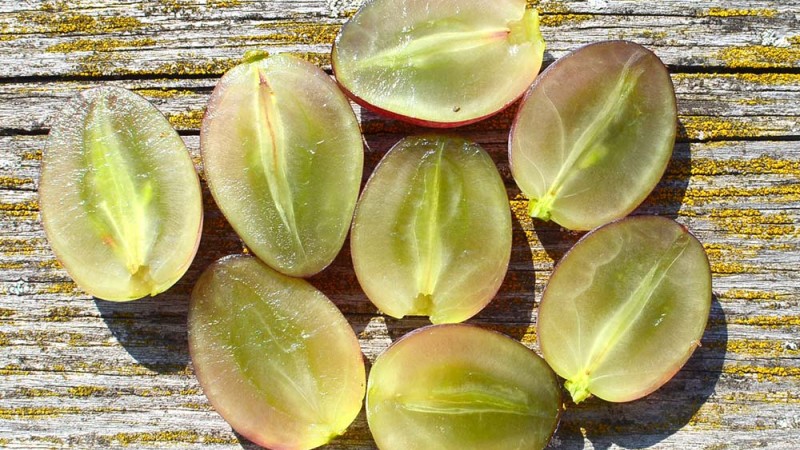
Seedless grapes have always been very popular among lovers of this sunny fruit, and today more and more hobby winegrowers are paying attention to this relatively large group of hybrid forms of vines. What is so attractive about seedless grape varieties? Of course, it is seedlessness. Seedless grapes are most suitable for dietary consumption, especially for young children. Just eating grapes whole, without having to separate and remove the seeds, is much more convenient and allows you to experience a special pleasure, joy and satisfaction from consuming grapes. Of course, the taste properties of the grape variety are also very important.
Breeding a seedless grape variety with large berries usually requires a long-term breeding effort, lasting several decades. The genetic incompatibility of large berries and seedlessness has long been known. If the breeding goal is also combined with the requirement for resistance to fungal diseases and frost resistance, then the goal is out of sight. Therefore, the amount of effort behind seedless varieties must be appreciated. Due to the reduced requirements for protection against diseases, seedless grapes of these varieties represent a new quality. Since the consumption of seedless fruits is generally easier, seedless grape varieties are considered to be more commercially valuable than varieties that produce seeds. Resistance to fungal diseases further adds value to seedless varieties.
The term seedless does not mean the complete and absolute absence of seeds in the berries. All seedless grape varieties belonging to the "Sultanina" group (in Russia and Ukraine referred to as "Kishmish") form fruits in the form of stenospermocarpy. This means that fertilization with pollen is necessary to form a berry, but after a certain time the development of the seed is interrupted, the seed does not develop further and does not grow. All berries then contain the remains of the seeds traces, from tiny to large.
The highest quality varieties in terms of seedlessness are classified as class I. The seeds traces in the berries are so small that they are practically not felt when eating. The last category includes varieties of class IV. seedlessness. In their berries, the seeds traces are relatively large, often reaching the size of seeds, but not fully formed, that is soft. We call such varieties soft-seeded.
Depending on the weight of the seeds traces in the berry, seedless varieties are divided into the following classes (degrees) of seedlessness:
I. class of seedlessness – 0 to 6 mg
II. class of seedlessness – 6.1 to 10 mg
III. class of seedlessness – 10.1 to 14 mg
IV. class of seedlessness – 14.1 and more mg
